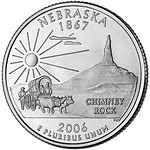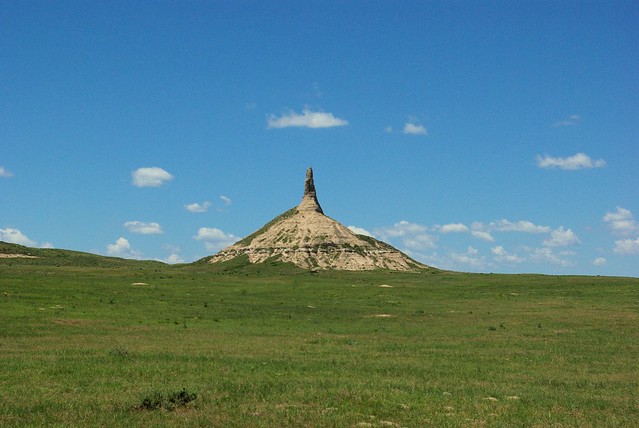 Five years ago, in a blog post titled A Long Day, I wrote that I would be publishing individual posts on different places we had stopped. While I had the best of intentions, I never got around to it – until now.
Five years ago, in a blog post titled A Long Day, I wrote that I would be publishing individual posts on different places we had stopped. While I had the best of intentions, I never got around to it – until now.
Chimney Rock National Historic Site
As a kid growing up in western Nebraska, Chimney Rock was an a familiar image from tourist advertising, posters and postcards. However, I only had one opportunity to see it when I was still living there – and I really don’t remember if I did.
 Chimney Rock National Historic Site, Nebraska, July 9, 2010
Chimney Rock National Historic Site, Nebraska, July 9, 2010
Chimney Rock is one of the most famous and recognizable landmarks for pioneer travelers on the Oregon, California, and Mormon Trails, a symbol of the great western migration. Located approximately four miles south of present-day Bayard, at the south edge of the North Platte River Valley, Chimney Rock is a natural geologic formation, a remnant of the erosion of the bluffs at the edge of the North Platte Valley. A slender spire rises 325 feet from a conical base. The imposing formation, composed of layers of volcanic ash and brule clay dating back to the Oligocene Age (34 million to 23 million years ago), towers 480 feet above the North Platte River Valley.
Though the origins of the name of the rock are obscure, the title “Chimney Rock” probably originated with the first fur traders in the region. In the early 19th century, however, travelers referred to it by a variety of other names, including Chimley Rock, Chimney Tower, and Elk Peak, but Chimney Rock had become the most commonly used name by the 1840s.
After examining over 300 journal accounts of settlers moving west along the Platte River Road, historian Merrill Mattes concluded that Chimney Rock was by far the most mentioned landmark. Mattes notes that although no special events took place at the rock, it held center-stage in the minds of the overland trail travelers. (National Park Service)

